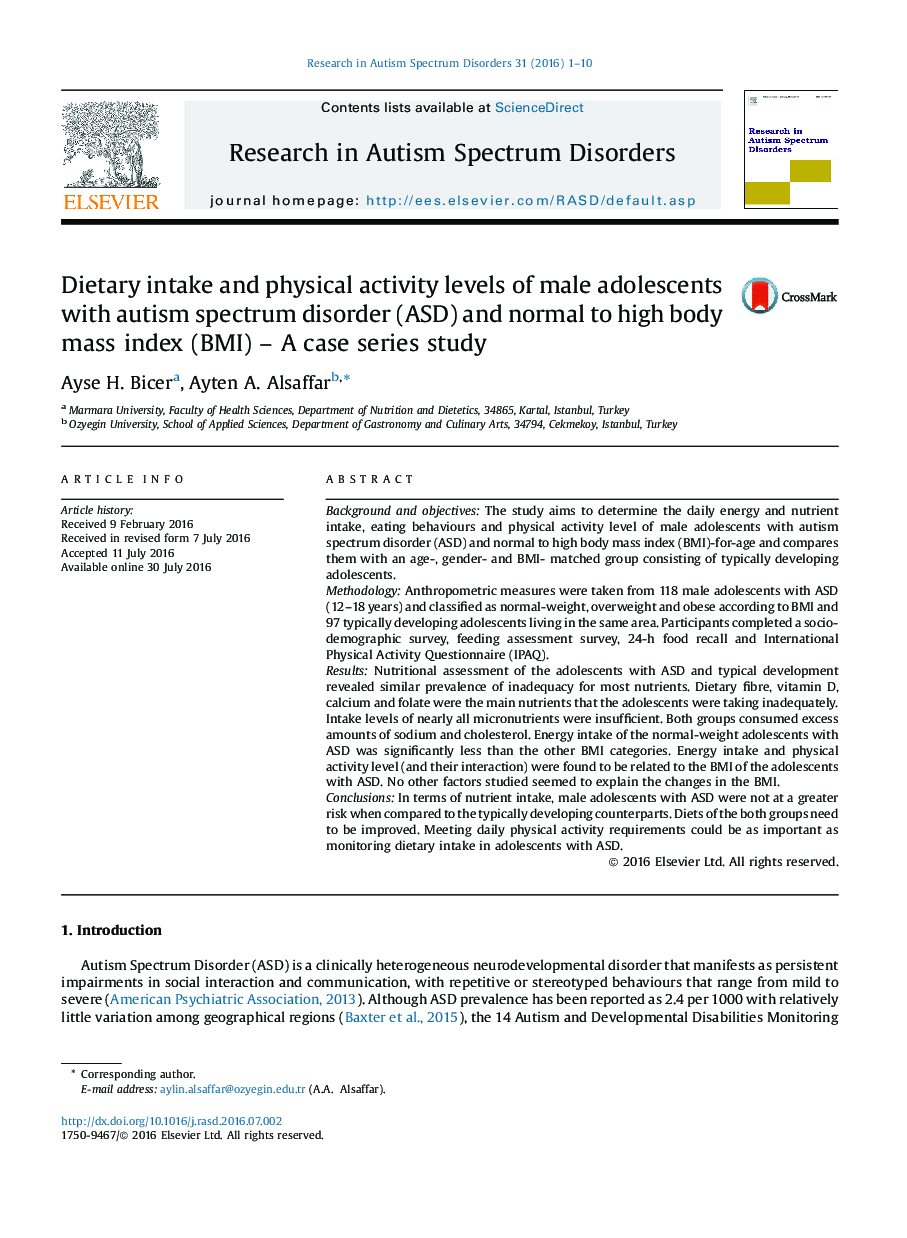| کد مقاله | کد نشریه | سال انتشار | مقاله انگلیسی | نسخه تمام متن |
|---|---|---|---|---|
| 369895 | 621822 | 2016 | 10 صفحه PDF | دانلود رایگان |
• In terms of nutrient intake, adolescents with autism spectrum disorder (ASD) seemed not to be at a greater risk when compared to the typically developing counterparts.
• Dietary fibre, vitamin D, calcium and folate were found to be the main nutrients that the adolescents in both groups were taking inadequately.
• Adolescents with ASD and typical development consumed excess amounts of sodium and cholesterol.
• Adolescents with ASD had significantly lower physical activity when compared to typically developing counterparts in all BMI-for-age categories.
• Physical activity level, dietary energy intake and their interaction were significant predictors of BMI of the adolescents with ASD.
Background and objectivesThe study aims to determine the daily energy and nutrient intake, eating behaviours and physical activity level of male adolescents with autism spectrum disorder (ASD) and normal to high body mass index (BMI)-for-age and compares them with an age-, gender- and BMI- matched group consisting of typically developing adolescents.MethodologyAnthropometric measures were taken from 118 male adolescents with ASD (12–18 years) and classified as normal-weight, overweight and obese according to BMI and 97 typically developing adolescents living in the same area. Participants completed a socio-demographic survey, feeding assessment survey, 24-h food recall and International Physical Activity Questionnaire (IPAQ).ResultsNutritional assessment of the adolescents with ASD and typical development revealed similar prevalence of inadequacy for most nutrients. Dietary fibre, vitamin D, calcium and folate were the main nutrients that the adolescents were taking inadequately. Intake levels of nearly all micronutrients were insufficient. Both groups consumed excess amounts of sodium and cholesterol. Energy intake of the normal-weight adolescents with ASD was significantly less than the other BMI categories. Energy intake and physical activity level (and their interaction) were found to be related to the BMI of the adolescents with ASD. No other factors studied seemed to explain the changes in the BMI.ConclusionsIn terms of nutrient intake, male adolescents with ASD were not at a greater risk when compared to the typically developing counterparts. Diets of the both groups need to be improved. Meeting daily physical activity requirements could be as important as monitoring dietary intake in adolescents with ASD.
Journal: Research in Autism Spectrum Disorders - Volume 31, November 2016, Pages 1–10
